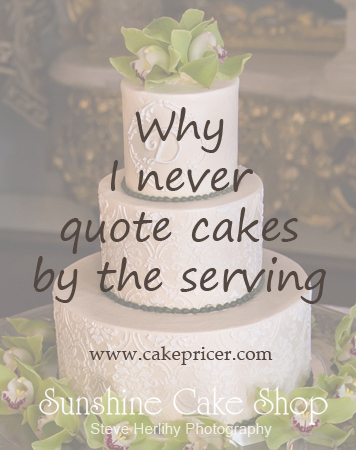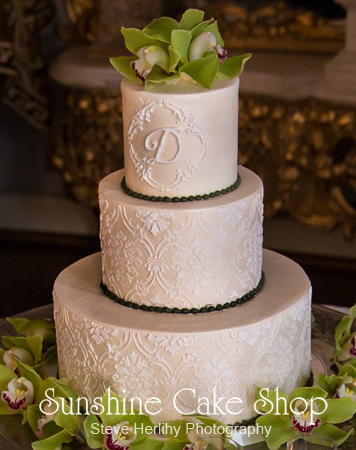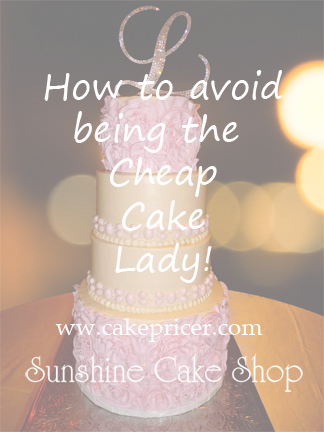
For me, there were several things that caused this phenomenon.
I needed a portfolio
In the beginning, I wanted to take every job I could just to get the experience and build up a portfolio. My family and I could only eat so much cake and I didn’t have the money to waste on ingredients that I wasn’t getting reimbursed for, so making cakes to give away to various people was not a good option for me. So my solution was to charge for just enough to cover my costs to get the “exposure”.
The problem with this is that I had plenty of people willing to “give me a shot” with their celebration cake, but they got accustomed to paying very little for very elaborate cakes. It was next to impossible to maintain these customers as repeat customers after I started charging for my time and overhead when I built my commercial kitchen and went legit.
Estimating my time
Almost every cake that I did was some new-to-me technique. This was several years ago, so there weren’t so many tutorials, free or paid, online and other cake decorators definitely were not as helpful as they are now. It was very much trial and error to give someone a quote that includes the time it takes to decorate when you have never tried the technique. For me, most of the time I severely under-estimated the time it would take to complete the cake.
Nowadays, there are lots of resources for determining how long a technique will take. Asking in Facebook groups and looking up YouTube videos for particular techniques can help you avoid the pitfalls of quoting a cake without having made one just like it prior.
My client sent me this photo as the cake that she wanted for her wedding. (Sorry for not giving credit to the original creator of the cake, but I was unable to find who made it.)
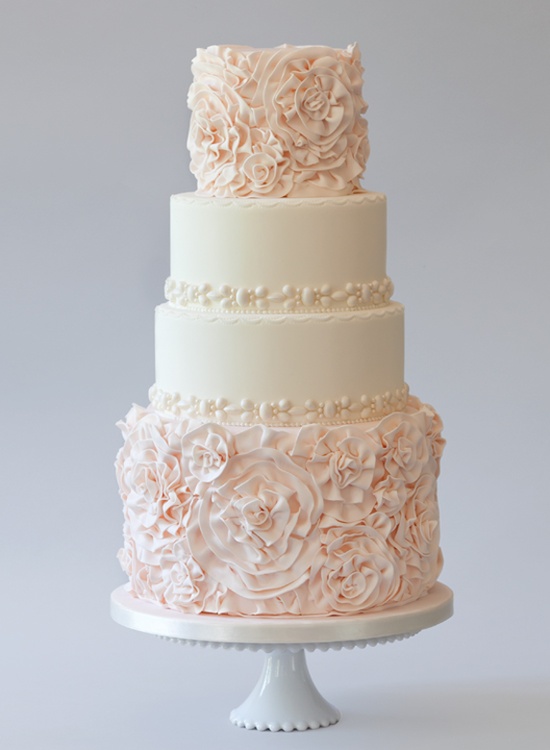

This border!
- I thought there would be a mold for that.
- Time was estimated based on a single mold.
- Each piece was molded and placed individually.
Estimating Time
Cake Pricer spreadsheet calculates time for making and baking your cakes, fillings, and icings, but you have to estimate your decorating time manually.
In this case, I severely under-estimated how long it would take to do that border. Plus, since it was not a single mold to make those shapes, I had to purchase 2 separate molds to make the different sizes. I should have researched a little further before giving a quote to the client.
so how do you track your time?
If you have never done a particular style, you will pretty much have to guess or ask other decorators how long it takes them. Keep in mind that skill level plays a large part in how long it will take someone to perform any task. If you are asking someone else, ask them how long it took them the FIRST time they did it. If it is going to take you 30 hours to do a technique and you feel like you can’t charge a customer for that many hours, then maybe you need to evaluate whether or not you should do that cake at all.
I tend to make cakes for my family using new techniques, that way I can track my time and know how to quote it to someone else if needed. I have all boys in my house, so I don’t get to do many girly cakes, but occasionally I will do a cake for a niece or aunt or my mom that allows me to try new styles more suited to the ladies.
I track my time on all of my cakes, for every aspect of the cake, just to know if I am estimating correctly, and also to double-check the time inputs in the spreadsheet where it relates to recipes. I don’t make cakes for the general public any more, so I don’t make as many cakes per year as I did when I had my shop. If you make many cakes per week or even per month, you would not need to track every cake because you would probably do the same design multiple times. It’s up to you as to how often you want to track how long it takes you to complete a project.
I have an android phone, so I use an app called Gleeo Time Tracker (https://gleeo.com) it is free, and easy to use. I’m sure there is something similar for apple devices.
Pricing basics
- Ingredients/Materials Cost
- Labor Cost
- Overhead Cost
- Profit
Everyone typically covers the ingredients & materials costs when quoting, but a custom cake is much more than just the ingredients. It requires a LOT of skill and a lot of time. Just because you love what you do, doesn’t mean that you should do it for free or for less than a minimum wage.
You should remember that you are running a business. You probably don’t negotiate with the person who cuts your hair or fixes your car and you shouldn’t allow people to negotiate your prices.
Ingredients & Materials
This is all of the ingredients, cake boards, cake boxes, supports, gloves, icing colors, etc. that you use up when you make a cake. If you pay sales tax when you purchase these items, your cost calculation should also include the tax you paid.
Labor
This is all the time you spend making the cake, but it is also all the time you spend planning, shopping, making templates, and cleaning up. Do not short-change yourself on how much time you spend working on a cake. This is time away from your family. Make it worth it.
overhead
This is things like rent, utilities, loan repayment, health dept fees, tools replacement, etc.
Even if you are a home-based business, you need to account for the extra water and electricity you use making cakes.
profit
This is what is left over after all the ingredients/materials are purchased, your bills are paid, and YOU are paid. This is what will eventually allow your business to grow. I started out adding a 20% profit and then upped it to 30% after my skills improved. You can be a little flexible here if you have accounted for all of the other items.
See below for an explanation of how to calculate profit.
calculating profit percentage
Here is the math behind calculating profit. Luckily, the Cake Pricer spreadsheet calculates this for you. All you have to do is choose what percent profit you want and enter it on the Preferences sheet. You can also adjust it on the fly on the Pricing Details sheet where the final price is calculated.
Markup percentage is the amount of markup divided by the cost.
So, if your item cost a dollar and you sold it for $1.50 your markup percentage is 50%.
Margin is the amount of markup divided by the total retail price, so your margin on that item would be 33%.
An easier example to understand is for 20% profit. 20% = 0.20.
Take 1 minus your profit % to get the number to divide by. So, for 20% profit you have to divide your cost by (1 – 0.2) = 0.8.
So, if your costs are $60 then price = $60 / 0.8 = $75.
Cost: $60
Price: $75
Profit: $75 – $60 = $15
Profit %: 15 / 75 x 100 = 20%
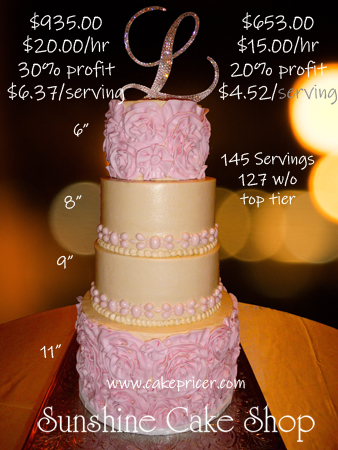
flexibility & confidence
In the end, you have some flexibility in your pricing. In this example, I entered all of the ingredients, materials and overhead for the cake in the picture (my version of what the customer submitted to me above).
My standard hourly rate and profit amount are $20/hour and 30% profit. That made the total price $935.00 with a price per serving of $6.37 (145 servings).
I can adjust that price up or down by adjusting the hourly rate or the profit percent. In this example, with everything else the same as above, I changed the hourly rate to $15.00/hour and the profit amount to 20%. This lowered the total price of the cake to $653.00, making the price per serving lower to $4.52/serving.
I did not ever allow my customers to negotiate my pricing, but before I sent them a quote, if I felt like it was pricing out too high, I would play with the hourly rate and profit percentage to see how it effected the price. If I really wanted the job, I might adjust to the lower amount. But the point is, that I made the decision with confidence, because I knew that I had control of how much I was going to make on any particular cake.
A big thing to remember is that custom cakes are a luxury item and not everyone is your customer. Don’t feel guilty charging prices that make it worth your while to take the job. I made more money the last year I was in business by charging what I felt I was worth. I didn’t win as many orders, but the orders I did win were priced to make me money and everyone was happy.
